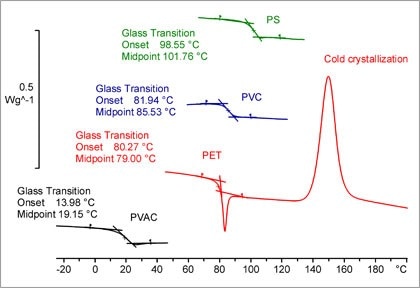
The determination of glass transition temperature (Tg) is critical for understanding a material's properties. It indicates the temperature at which a substance transforms from a glassy state to a rubbery state or vice versa. The formation of such amorphous glasses is a universal phenomenon observed in practically all materials.
For practical applications, it is important to realize that the properties of glasses differ significantly from those of other solids. For example, the solubility of glasses is higher than for crystals; this influences the biological activity of pharmaceutical substances.
Why is the Determination of Glass Transition Temperature so Important?
The glass transition provides information about molecular dynamics in the supercooled melt. It defines the upper temperature limit for the use of solid amorphous materials; for rubbery materials, it is the lower temperature limit.
Knowledge of the glass transition is also important for optimizing production parameters and the properties of products. In addition, the glass transition can be used to identify and compare materials and is therefore important for quality assurance and failure analysis.